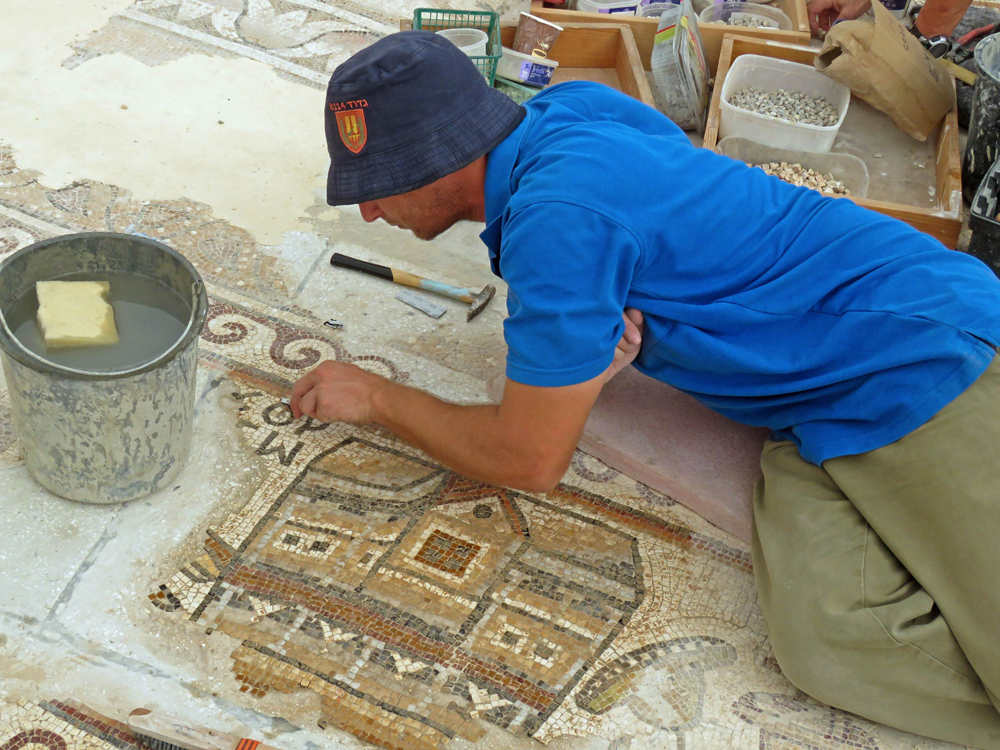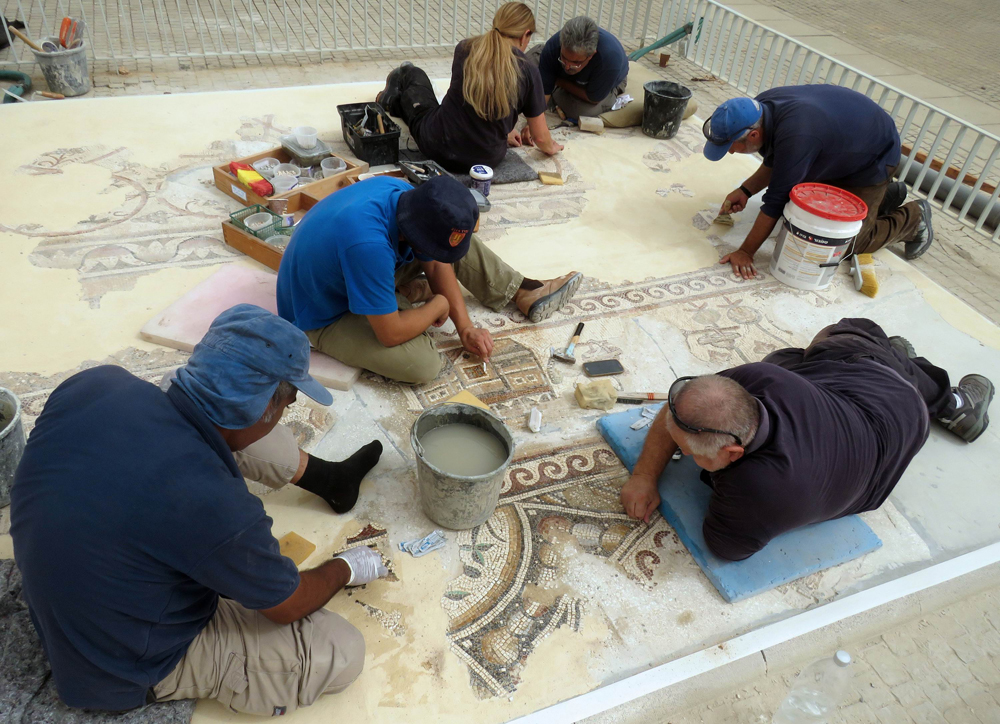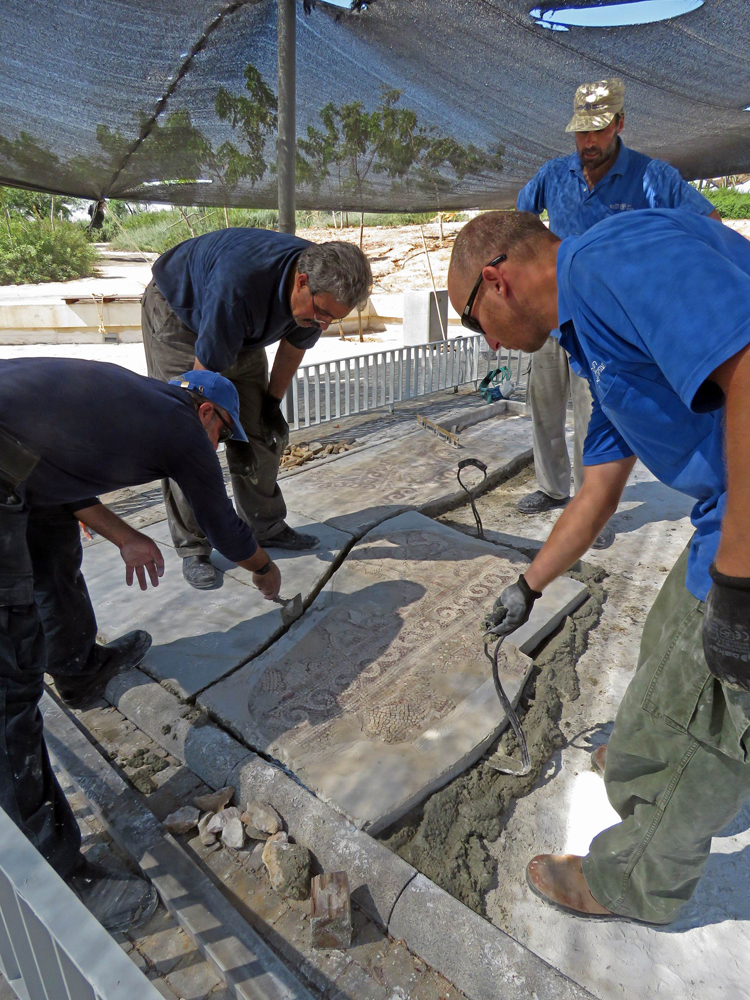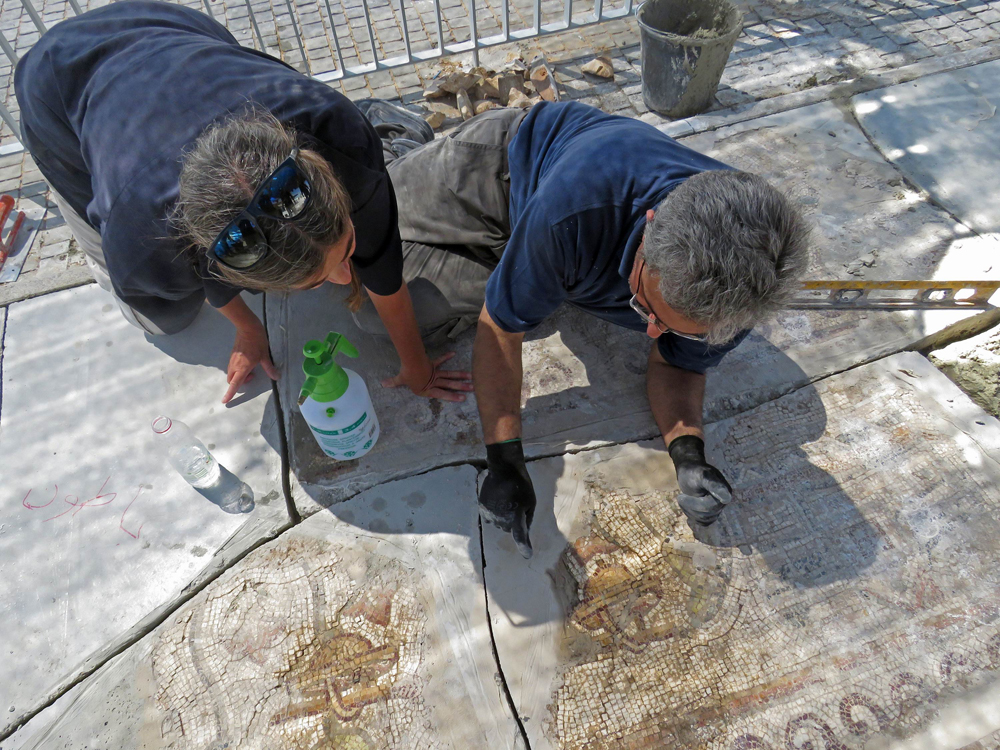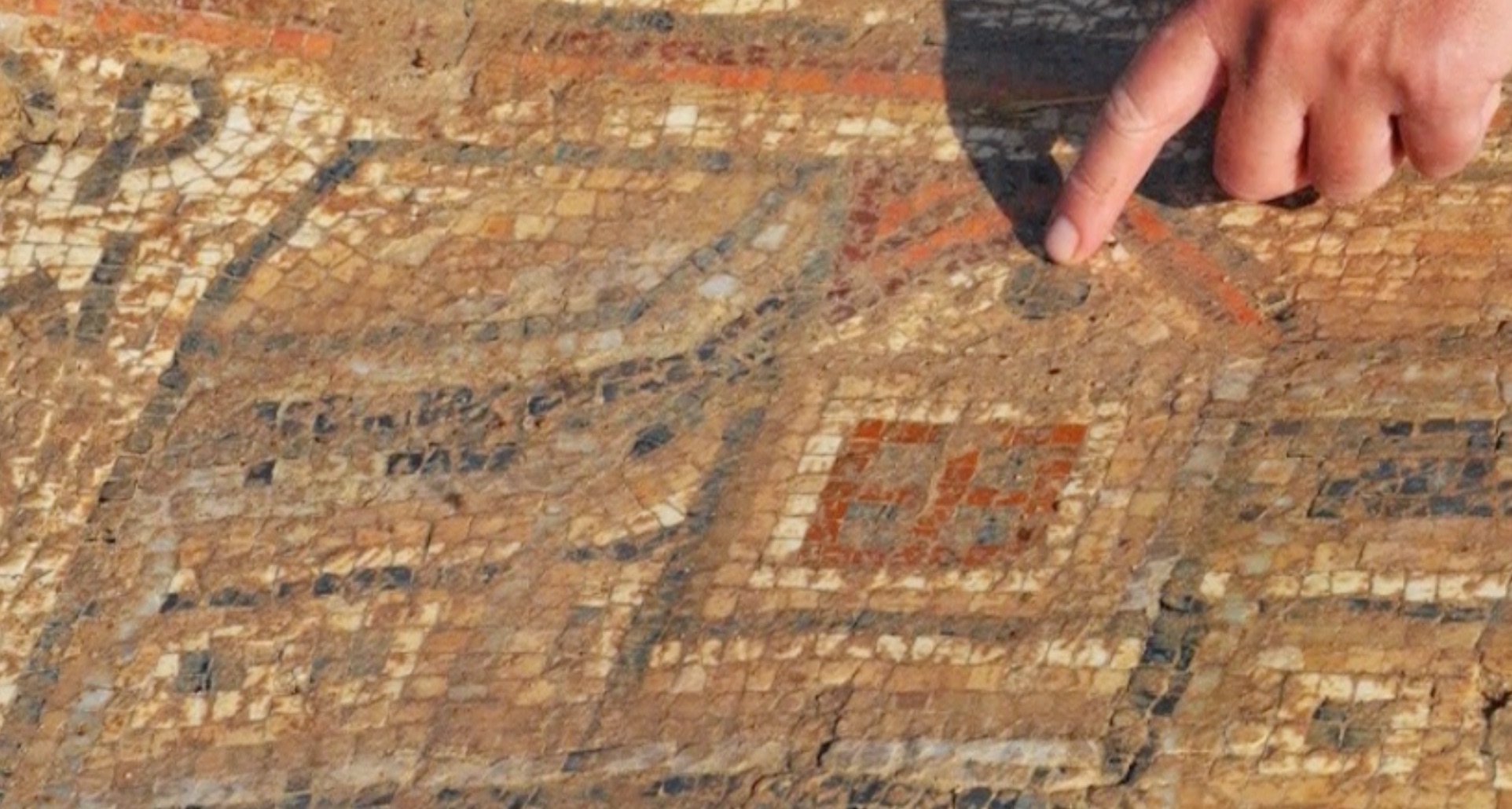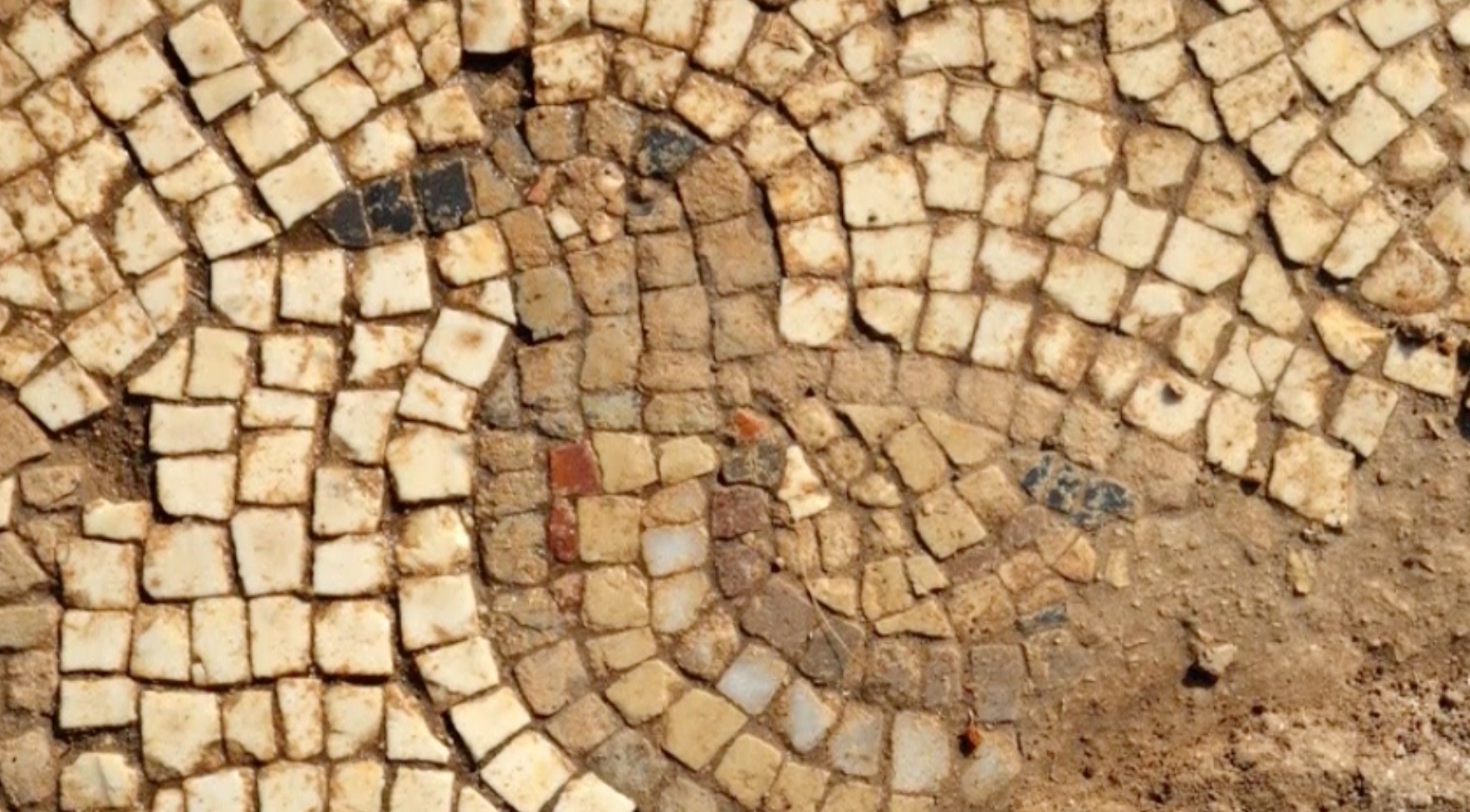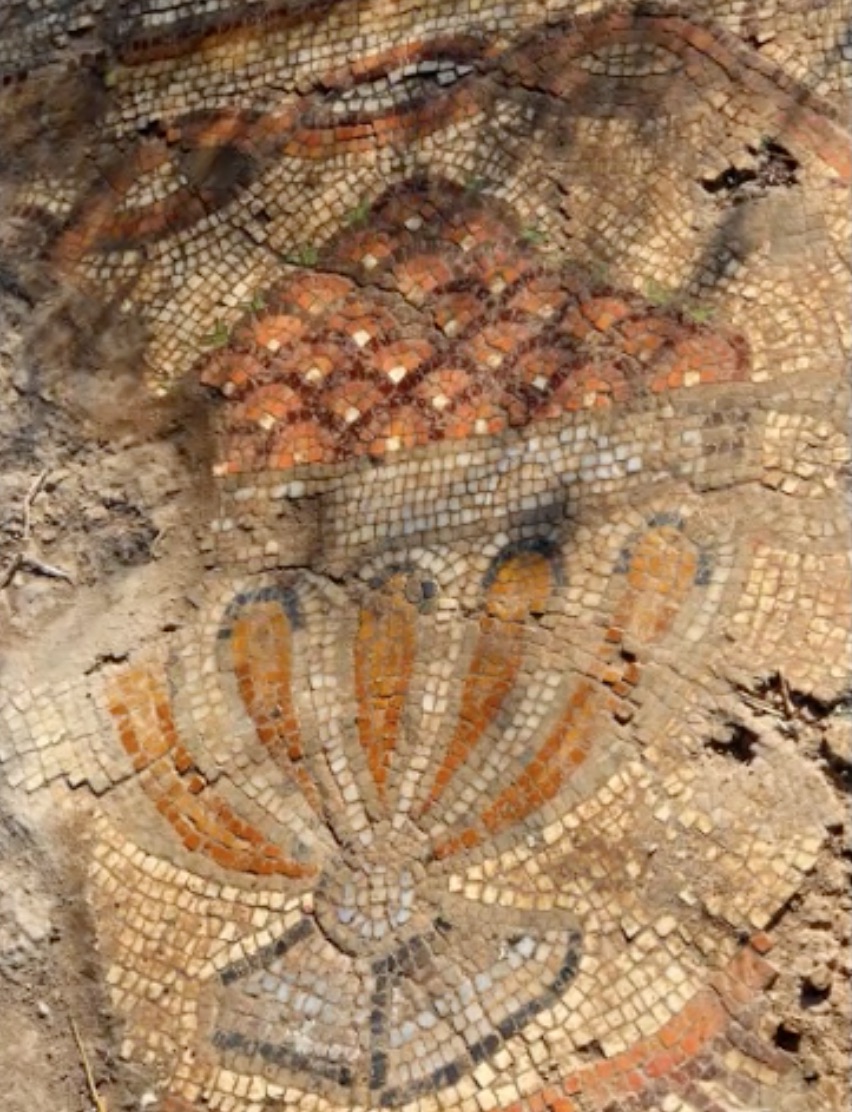In Photos: Elaborate Mosaic Adorned Floor of Ancient Church
An expansive mosaic, depicting a map of sorts of an ancient Egyptian settlement as well as images of birds and other animals, graced the floor of a church in what is now Israel about 1,500 years ago. See images of the mosaic below. [Read full story on Byzantine mosaic]
Mosaic revealed
An archaeologist works on the 1,500-year-old church mosaic found in an industrial park in Qiryat Gat, Israel. This elaborate mosaic shows a city scene in Chortaso, Egypt, and dates back to the Byzantine period. Archaeologists first found the mosaic two years ago. They've now restored and protected it and are returning it to its original site for public display. (Credit: Nikki Davidov, courtesy of the Israel Antiquities Authority)
Detailed work
The mosaic survives in two portions, one of which shows a maplike cityscape of Chortaso. Early Christian tradition held that Chortaso was the burial place of the minor Hebrew prophet Habakkuk. (Today, both Israel and Iran claim to have tombs belonging to Habakkuk.) The focus on Chortaso suggests the origin of the Byzantinian congregation that worshiped in the now-destroyed church, archeaologists said. (Credit: Nikki Davidov, courtesy of the Israel Antiquities Authority)
Conserving history
Israel Antiquities Authority workers set the mosaic in its parking-lot home. The property management company that owns this industrial park underwrote the costs of excavation and is holding a festival on Oct. 1, during which the mosaic will be revealed to the public for the first time. (Credit: Nikki Davidov, courtesy of the Israel Antiquities Authority)
Get the world’s most fascinating discoveries delivered straight to your inbox.
Ancient artistry
While one section of the Byzantine mosaic shows an Egyptian cityscape, the other depicts birds, other animals and red fruit in a goblet. The materials used to create the mosaic were expensive and luxurious, archaeologists say. (Credit: Nikki Davidov, courtesy of the Israel Antiquities Authority)
Tiny tiles
In total, 17 colors of tile were used to make the mosaic, which would have decorated a Byzantine church floor. The Byzantine empire persisted after the fall of Western Rome until 1453. This mosaic dates back to the earlier days of the empire, approximately 1,500 years ago. (Credit: Nikki Davidov, courtesy of the Israel Antiquities Authority)
Detailed buildings
The buildings in the Egyptian cityscape are rendered in careful detail, revealing balconies, galleries and even red roof-tiles. Windows, too, are lined in red. The scene also shows a boat on the Nile with its sail rolled up. (Credit: Eyecon, Courtesy of the Israel Antiquities Authority)
Colorful fragments
Leaves, flowers and decorative whorls can be seen on the 1,500-year-old church mosaic. "The investment in the raw materials and their quality are the best ever discovered in Israel," the project archaeologists wrote. (Credit: Eyecon, Courtesy of the Israel Antiquities Authority)
Little bird
A black-beaked bird with yellow, red and blue feathers is also depicted in the Byzantine mosaic found in Israel. The mosaic also shows a rooster and deer. (Credit: Eyecon, Courtesy of the Israel Antiquities Authority.)
Cup overflows
A goblet overflowing with red fruit, depicted by a mosaic artist 1,500 years ago. Mosaics were a common decoration for church floors in the Byzantine era. (Credit: Eyecon, Courtesy of the Israel Antiquities Authority.)
Follow Stephanie Pappas on Twitter and Google+. Follow us @livescience, Facebook & Google+.

Stephanie Pappas is a contributing writer for Live Science, covering topics ranging from geoscience to archaeology to the human brain and behavior. She was previously a senior writer for Live Science but is now a freelancer based in Denver, Colorado, and regularly contributes to Scientific American and The Monitor, the monthly magazine of the American Psychological Association. Stephanie received a bachelor's degree in psychology from the University of South Carolina and a graduate certificate in science communication from the University of California, Santa Cruz.
